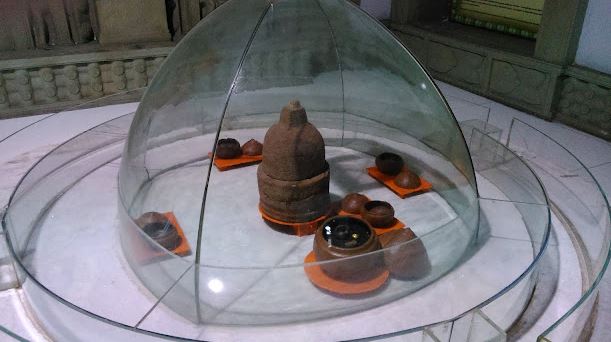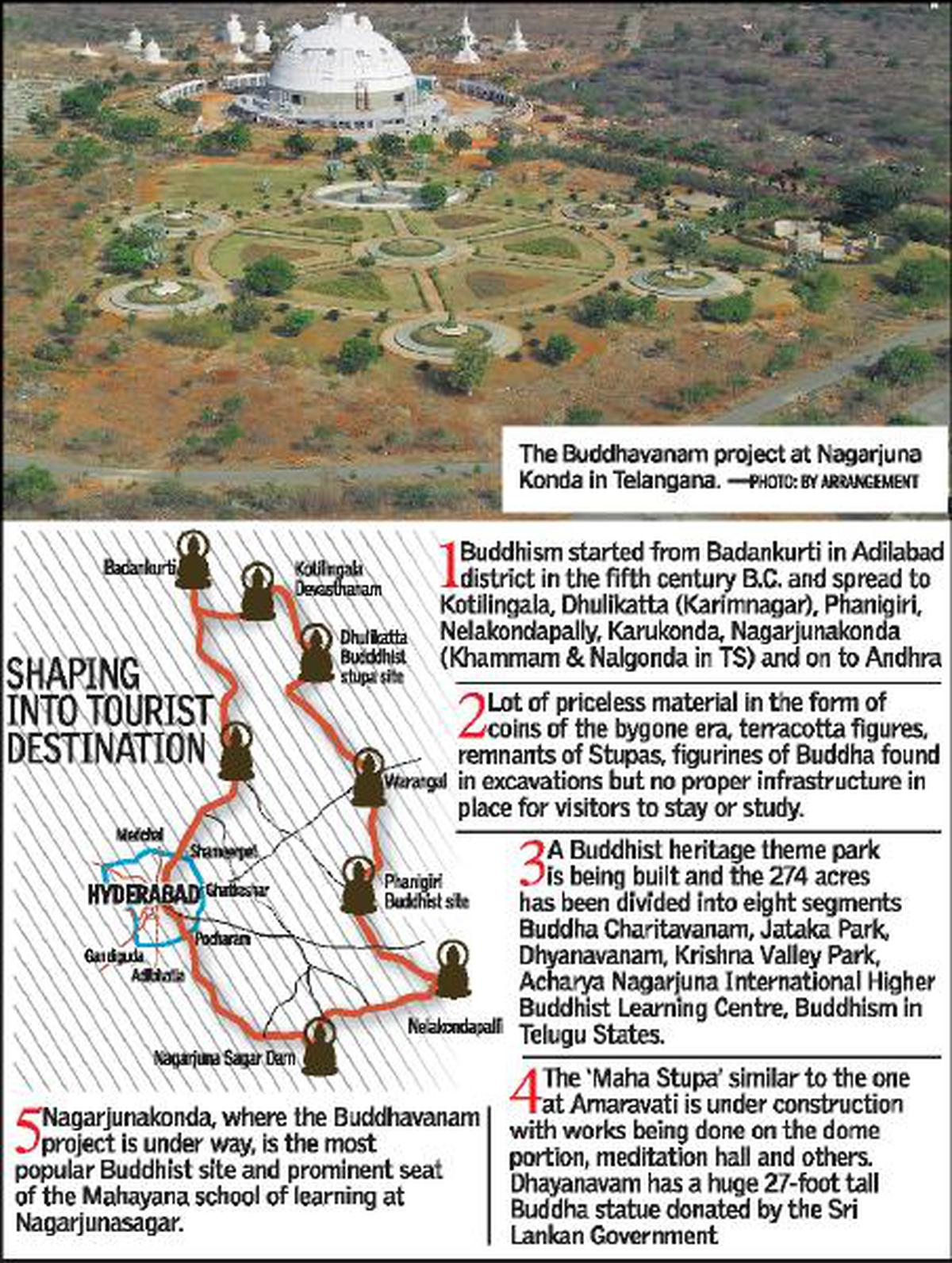Note4Students
From UPSC perspective, the following things are important :
Prelims level: Bavikonda Buddhist Complex

Why in the News?
- Ten years after the division of Telangana from united Andhra Pradesh, the distribution of antiquities, manuscripts, and cultural objects remains contentious.
- The custody of objects like Buddha Relics from Bavikonda are part of this dispute.
About Bavikonda Buddhist Complex
|
About Buddha Relics from Bavikonda
- The relics were discovered in 1993 during archaeological excavations conducted by the Andhra Pradesh Department of Archaeology and Museums (DAM).
- These discoveries have significantly contributed to our understanding of the spread of Buddhism in the region during the post-Ashoka period along the Krishna River basin.
- Nature of Relics:
- The site at Bavikonda yielded several earthen vessels containing gold objects and precious beads.
- These relics are believed to include corporeal remains (related to skull) of the Buddha, along with silver and gold caskets.
- These were found alongside an earthen urn or receptacle (Samudgaka) containing ashy deposits and burnt charcoal.

Noted Buddhavanam Sites in Andhra Region
- Thotlakonda: Located near Visakhapatnam, Thotlakonda is another prominent Buddhist site dating back to the 3rd century BC to the 3rd century AD. It consists of monastic complexes, stupas, chaityas, viharas, and a university. Excavations have revealed relics and artifacts indicating it was a major center for Buddhist learning and trade.
- Salihundam: Situated near Srikakulam, Salihundam dates from the 2nd century BC to the 12th century AD. It features remnants of stupas, votive stupas, monastic complexes, and sculptures. The site is noted for its architectural and sculptural heritage, reflecting a blend of Buddhist and Hindu influences over centuries.
- Pavurallakonda: Close to Bheemunipatnam, Pavurallakonda is a Buddhist hilltop monastery dating back to the 3rd century BC to the 2nd century AD. It includes viharas, chaityas, and relic caskets. The site offers panoramic views of the coastline, adding to its spiritual ambiance.
- Ghantasala: Located near Krishna district, Ghantasala served as an ancient Buddhist site from the 2nd century BC to the 2nd century AD. It contains stupas, viharas, and relics that indicate its significance as a trading hub and center for Buddhist teachings.
- Nagarjunakonda: Situated in the Guntur district, Nagarjunakonda is an island on the Krishna River that flourished from the 3rd century BC to the 3rd century AD. It boasts numerous Buddhist monasteries, stupas, chaityas, and sculptures. The site is renowned for its architectural grandeur and extensive archaeological findings.
PYQ:[2015] Which of the following kingdoms were associated with the life of Buddha?
Select the correct answer using the codes given below: (a) 1, 2 and 3 (b) 2 and 3 only (c) 1, 3 and 4 (d) 3 and 4 only |
Get an IAS/IPS ranker as your 1: 1 personal mentor for UPSC 2024

